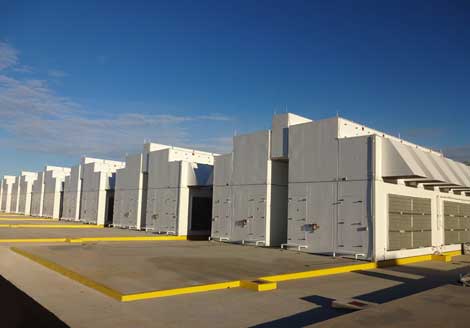Microsoft Moves Away from Data Center ContainersMicrosoft Moves Away from Data Center Containers
Finds ITPACS aren’t the best way to scale its cloud globally

The cloud will not be housed in data center containers.
Google has taken the container route for building out data center capacity in the past but eventually decided against it. Now, Microsoft has also found that containers just aren’t the best way for it to scale.
The Redmond, Washington-based giant went through multiple generations of data center containers, from standard shipping containers it stacked two-high at its Chicago data center years ago to custom-designed ITPACs, which it had been deploying in data centers from Quincy, Washington, to Boydton, Virginia, since 2010.
But because it has placed so much focus on growing its cloud services in recent years, Microsoft has had to expand data center capacity around the world at a pace that couldn’t be achieved with containers, Kushagra Vaid, general manager for hardware infrastructure at the company’s cloud and enterprise division, said in an interview.
Related: Microsoft: Bigger Underwater Data Center in the Works
Amazon also has used data center containers to host its cloud infrastructure. In a conference presentation in 2011, one of its top infrastructure engineers James Hamilton showed a picture of two containers, one stacked on top of the other. The presentation was a rare look inside the cloud giant's computing platform. The company is extremely secretive about its infrastructure strategy, and it's unclear whether that strategy still includes containers.
About two years ago, Microsoft’s infrastructure team made a radical change to its hardware approach, going from different product teams making their own hardware decisions to standardizing on a handful of server designs that took cues from server specs Facebook open sourced through its Open Compute Project initiative.
The team also realized it would gain a lot from standardizing on the data center design as it scaled globally, but standardizing on the ITPAC wouldn’t make sense. It used ITPACs in data centers it built for itself, but to scale at the pace that it wanted to scale, it would have to take colocation space from data center providers, so standardizing on a non-containerized colo design made a lot more sense, Vaid explained. This design can be used across both the huge data centers Microsoft builds for itself and the facilities it leases from commercial providers.
Microsoft considers time to market a key differentiator for its cloud services, and it has been ahead of both Amazon Web Services and Google Cloud Platform (its biggest competitors in this space) in terms of the number of locations that support Azure.
To maintain this edge, the company has been taking down colocation space at a maddening pace. In North America alone, it signed three leases for nearly 30MW of capacity total in 2015, according to the commercial real estate firm North American Data Centers, and three more amounting to 47MW just in the first quarter of this year.
Most of the data center capacity Microsoft takes down is to support Azure and Office 365, Vaid said. Both are growing with tremendous speed, and the company has to make sure it has enough capacity to support the demand.
Containers were a way to implement some key design concepts, such as containment and busbar power distribution. “We realized that we can do the same thing in a colo,” he said.
Microsoft’s next-generation colo design uses learnings from the container experience, providing the “best of both worlds,” Vaid said, the efficiency of containment and power distribution of ITPACs and the short time to market of the leased data center model.
About the Author
You May Also Like







